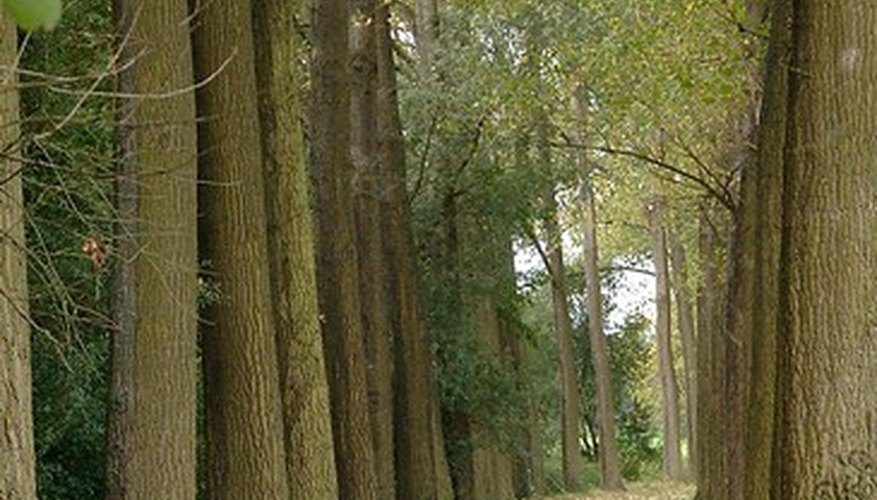The Populus Niga, otherwise known as the Lombardy Poplar, is a common and distinctive-looking tree. It is quick to grow and aesthetically pleasing. However, it is vulnerable to pests and diseases that reduce its lifespan.
Characteristics
The Lombardy Poplar can reach up to 50 feet in height with a spread of nearly 15 feet. The poplar's branches begin close to the ground and remain parallel to the trunk consistently up the tree. Its foliage is predominantly yellow.
Uses
The Lombardy Poplar is a fast-growing tree that is often planted in rows to provide privacy and wind blockage. Poplars are generally planted around eight feet apart and in rows for maximum efficiency.
- The Populus Niga, otherwise known as the Lombardy Poplar, is a common and distinctive-looking tree.
- The Lombardy Poplar is a fast-growing tree that is often planted in rows to provide privacy and wind blockage.
Pests and Diseases
Lombardy Poplars are most significantly affected by cytospora canker, bacterial westwood and borers, reducing their lifespan to an average of 20 to 30 years. Poplars also suffer aesthetically due to pests and diseases long before they are dead.
Removal Problems
Due to the difficulty of removing Lombardy Poplars, they are often viewed as a nuisance. It is essential that the poplar be thoroughly removed due to its ability to grow back. In order to effectively remove the poplar, expensive professional assistance is generally required.
Requirements to Grow
The poplar is commonly viewed as a short-lived tree, but its ability to grow with such ease makes it worthwhile for many. In order to maximise the poplar's growth, all that is required is full exposure to sun and being planted in well-drained soil.
- Lombardy Poplars are most significantly affected by cytospora canker, bacterial westwood and borers, reducing their lifespan to an average of 20 to 30 years.
- The poplar is commonly viewed as a short-lived tree, but its ability to grow with such ease makes it worthwhile for many.
